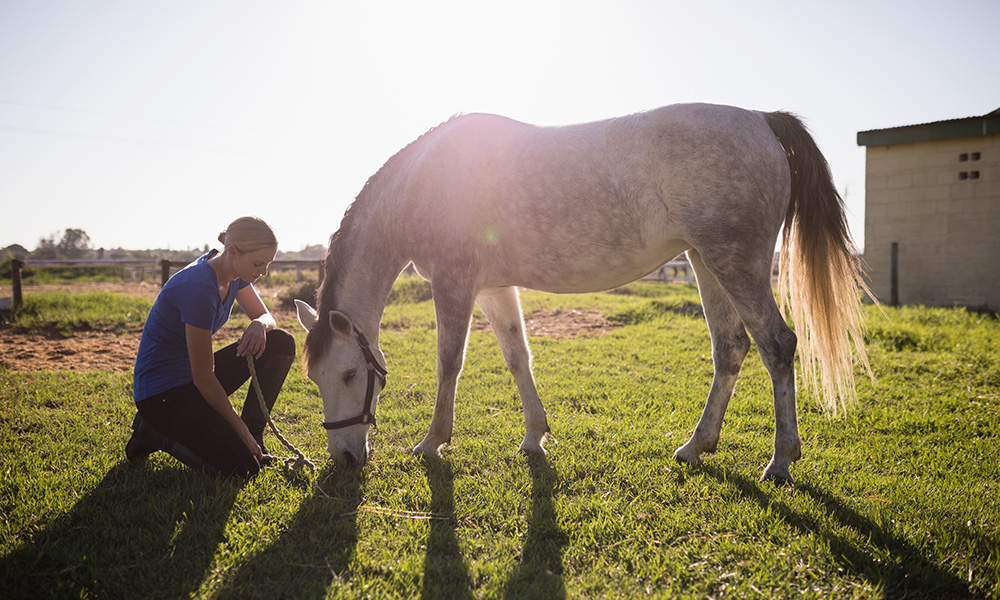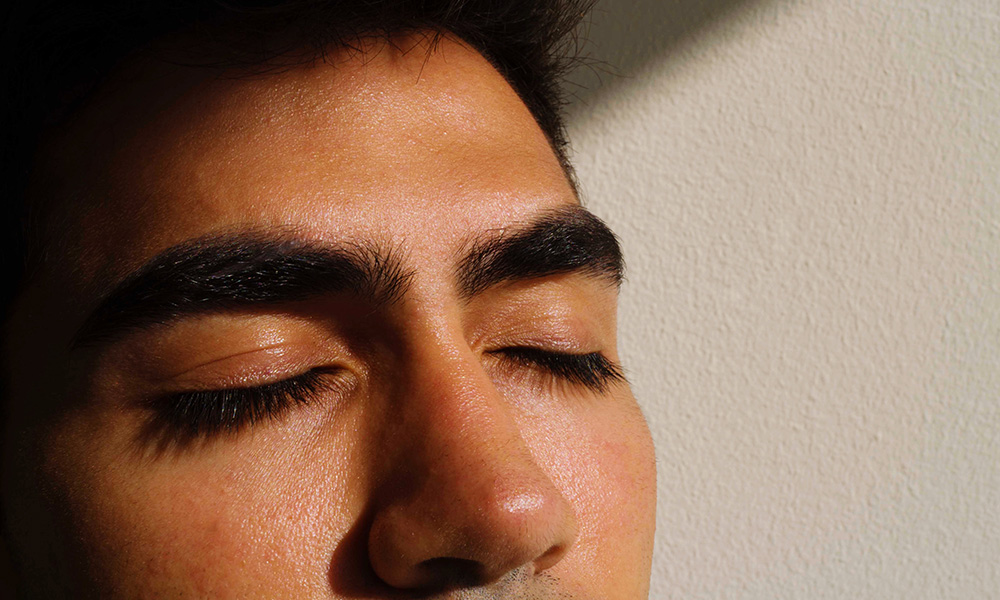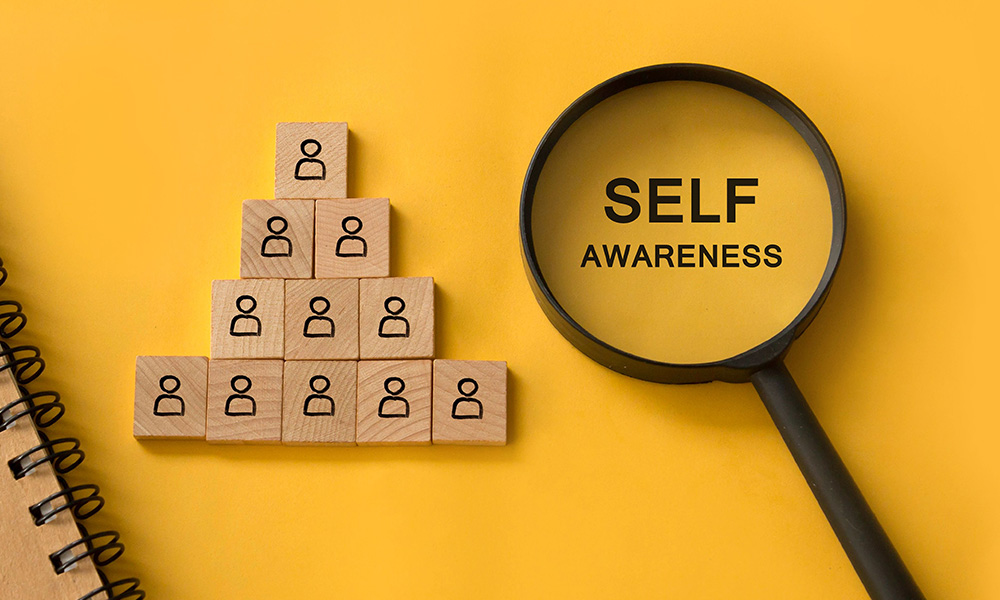The Importance of Rest
What I have found throughout my time in the mental health field is that many people in the world equate or have learned to equate their productivity to their worth. It is common that these individuals will take on many tasks and activities that fill their time and mind so they are able to feel valuable in the world or to certain people. These activities can be emotionally, mentally, or physically taxing for each person and yet they continue to participate with little to no time for themselves to recuperate; just constantly going and doing.
Rest has not been modeled or considered positive for many. In fact, slowing down has often been described as “lazy” or unnecessary by many clients who have come through my office. With this perception, these people are consistently depleting themselves—leaving them left to give and do none of the activities and tasks they hope to.
It seems that we can’t really give what we don’t have. So, if we hope to give our greatest effort/energy in all that we do, it is likely that we will need to rest to show up in the ways we want. This can be achieved by taking time to check in with our needs, be present to our emotions, and truly find times/ways to REST. Rest can look different for each person—it can be emotional, physical, spiritual, social, mental, sensory, or creative rest. This can look like lying in bed/taking a nap, participating in meditation, being in nature, taking time away from social activity, pausing use of television or social media, and more.
It is my hope that the skewed perception that someone is not productive if they choose to take time for themselves or engage in restful behaviors can be debunked and the concept of rest can continue to be reframed as a helpful tool and positive activity for those that need it most.
After nearly 20 years in the mental health field, I have decided that perhaps the most important concept I have learned is that of holding space. This is true no matter what role I am playing – therapist, mother, wife, daughter, sister or friend. Many years ago, very early in my training at the Gestalt Institute of Phoenix, a wise faculty member shared the following revelation “People are starving for a witness to their existence.” In our fast paced, fix-it, task oriented society it can be easy to miss the opportunity to hold space for those who seek our ears and often our guidance. I am a true believer that the answers lie within.
At the very core of the Eagala Model of equine-assisted psychotherapy is the foundation belief that our clients possess the answers. It is our job to create a safe space for those answers to rise to awareness and to ask the right questions and provide the right activities to bring that awareness to the foreground. I feel fortunate to see this happen every day.
“Janey” called one cool December morning to ask if she could come in for a “tune up” session – the semester was ending and she needed some perspective. Her mother found me when Janey was very young and struggling several major losses in her life. Over the years, she would come back for a handful of sessions to process challenges as they arose in her young life.
Today she gave no explanation for her need to come be with the horses other than perspective. She arrived with a heaviness to her presence – no bubbly smile or spring in her step – just a seriousness in her face that let me know there was a lot going on in her head. After a brief mindful breathing practice and check in with her body we stepped into the arena. Her step was purposeful and swift as she moved deep into the pasture to approach a horse she has worked with many times over the past 8 years. He lifted his head and reached his nose towards her as she approached. Her shoulders immediately dropped and I could hear a soft giggle as the tension left her body. After a few moments with him, she visited several other horses before returning to silently stand beside me. When asked what she needed today her reply was “I am not sure – just that I need to be here.”
We stood quietly side-by-side for 40 minutes. Her gaze primarily focused on her old friend and two other horses as they interacted. I stayed focused on the horses and Janey’s shifts in presence, patterns that presented, and unique interactions that unfolded and periodically checked in with my own internal state. She spoke only twice – once to draw reference to an interaction that was meaningful and at closing as she stated “This IS what I needed – to be still”. She then wished me a Merry Christmas, got in her car, and went home. Her mother later shared that “Janey” had not shared what happened in the pasture but something clearly shifted.
Did I have a dozen questions? Of course, I did. However, those questions were about me and would have intruded on a process that was unfolding within her. It is likely that my questions will organically be answered in our next session.
Of course, not all of my sessions are silent and still. Holding space takes on many forms. Sometimes we build/create, sometimes we story tell to the horses, sometimes we create art on the horses or dress them up and sometimes they carry our burdens. The important thing is that we create the space for learning, growth and healing to happen. In my work this is what allows my clients to connect with, and feel safe to address the next level of work that is bubbling to the surface. In my personal life it allows a friend or family member to find the avenue to their answer.
I struggled to find a topic for this blog so I gave myself some space and stepped away from it. I closed my eyes and grabbed a book off the shelf that I have had since high school, The Norton Anthology of English Literature. Yes, I have nerdy side. As I opened it, a note fell out that a friend wrote to me 40 years ago. It said “So much is said about those always talking, and so little about those always listening. You are one of those who is always listening. That is your gift.” and POOF, the holding space idea was there. Give yourself and the people in your life the gift of space.
If you would like the opportunity to visit our herd, with no strings attached… go to www.boisesgift.org and sign up to be notified about our Join the Herd events… no plan, no therapy, no activities… just BE!
I must admit there are two parts of me that show up each new year. One is excited and in anticipation of new experiences; the deepening of relationships, getting in better shape, new adventures, and putting behind the challenges of the previous year. The other part enters the new year somewhat less optimistic… I am getting older, so is it realistic to believe I can get in better shape; more challenges at work mean more exhaustion and discouragement; will I really enjoy new experiences or stay preoccupied with the challenges; and will relationships improve or prove to be more difficult. This internal tug of war creates an ambivalent attitude toward the new year and typically leads to a certain degree of numbness. You may relate to this process or look at each new year with all out enthusiasm, or perhaps you simply dread the coming of a new year. Wherever you find yourself, here is a proposal for each of us.
First, let’s reflect on our successes, no mater how few or many, as well as moments where life was good, no mater how long or short. Please do not keep these to yourself, share them with others! If their year was more challenging than yours empathize with them or if they had a more marvelous year than you celebrate with them and let it be an encouragement to you. Either way you will deepen your relationships.
Second, question what you learned from the previous year’s experiences. What did they reflect about you, your lifestyle, work, and relationships. In the struggles and the successes what did they teach you about self? If your mind takes you toward a negative perspective of self, open your mind to the possibility that every difficulty has a complimentary positive/constructive element to it. On the other hand, if your mind takes you to how wonderful you are, consider what you may have missed since every positive has a corresponding challenge to it. Pondering the balance in life can serve to setle us and deepen our connection with self. This otien leads to increased connection with others.
Lastly, consider a process to develop a path in support of accomplishing what you hope for this year. If you process verbally, discuss with those close to you your hopes and perhaps you’re your dreams. If you process through writing; make lists, journal, or even write a short story. For those visual folks create a vision board, draw, paint, and/or construct a collage. Whichever way you process, take advantage of your strengths, do it your own way.
I hope we all learn to embrace both the challenges and wonder this year will bring!
The surge in sexually transmitted infections (STIs) continues in the US with 2.5 million cases reported to the Centers for Disease Control (CDC) in 2021. Cases of syphilis in women jumped 49% compared to the prior year; congenital syphilis (when syphilis passes from mother to baby during pregnancy) was up 24% when compared to 2020. Rates of gonorrhea have increased 118% since their historic low in 2009. The CDC as estimated that one in five Americans (20%) have a STI in any given year. Young adults ages 20-34 have the highest rates of infection. The World Health Organization reports that the rates of non-classical STIs (such as Shigella, Hepatitis A, Zika, and lymphogranuloma venereum (LGV)) are also on the rise.
Because STIs often do not show symptoms despite their long-term health consequences, prevention and screening are essential to contain the spread of the diseases. With directed, government-supported efforts around the world, important advances in prevention and treatment are becoming available. I summarize a few of the most exciting recent advances in the world of STIs in the sections below.
doxyPEP
In what amounts to a major advance in prevention of STIs, the CDC released proposed guidelines in October 2023 for the use of the antibiotic DOXYCYCLINE as post-exposure prophylaxis to prevent infection following possible exposure to gonorrhea, chlamydia, and syphilis. This approach, known as doxyPEP, may help to counter the recent surge in these infections in the US and prompt uptake by other countries around the world.
The proposed guidelines recommend that a single 200 mg dose of oral doxycycline taken within 72 hours after oral, anal, or vaginal sex should be considered for gay, bisexual, and other men who have sex with men (MSM) and for transgender women who have had gonorrhea, chlamydia, or syphilis at least once in the past year. This is a strong recommendation supported by data from clinical trials.
The guidelines also say that doxyPEP “could be considered” for MSM and transgender women who have not had a recent STI if they “will be participating in sexual activities that are known to increase the likelihood of exposure to STIs, e.g., during weekend events, cruises and festivals.”
However, citing the lack of evidence, the guidelines do not recommend the use of doxyPEP for cisgender women, cisgender heterosexual men, transgender men, or other queer or nonbinary people. The CDC does leave the door open to clinicians to offer doxyPEP to these populations on a case-by-case basis following risk assessment.
DoxyPEP should be used in the context of a comprehensive sexual health approach that includes risk reduction counseling, STI screening and treatment, vaccination, and access to HIV pre-exposure prophylaxis (PrEP), HIV care and other services.
HIV Prevention
An estimated 38 million people are living with HIV worldwide, with up to 1.5 million new cases of HIV reported each year. Due to advances in prevention, the rate of HIV infection worldwide has dropped by 54% since the peak of the epidemic in 1996.
Pre-exposure prophylaxis (PrEP) for HIV prevention first became available in the US in 2012 and radically changed the risk of getting HIV for sexually active adults and adolescents. Daily oral dosing of a potent anti-viral combination has been shown to reduce the risk of HIV transmission by 99%. Maximum protection for receptive anal sex (bottoming) occurs after about 7 days of use. For receptive vaginal sex and injection drug use, PrEP pills reach maximum protection in about 21 days. PrEP is recommended for gay, bisexual, and other MSM, transgender women, and men and women who inject drugs.
“On-demand” oral PrEP, also known as the 2:1:1 method, has been shown to be safe and effective, reducing HIV transmission by 86% for men who have anal sex without a condom. The 2:1:1 method involves taking 2 pills 2-24 hours before possible sexual exposure (closer to 24 hours is preferred), followed by one pill daily for the next two days. The 2:1:1 method is recommended for MSM but not for heterosexual men and women, IV drug users, or transgender persons.
You can find a clinician who prescribes PrEP through the national PrEP Clinician Locator (https://preplocator.org/). Free PrEP and STI testing for men who have sex with men can be obtained through MISTR (www.heymistr.com).
Post-Exposure Prophylaxis (PEP) for HIV is also available in the US and is effective prevention for people who have risky sex infrequently. PEP is the use of antiretroviral drugs for 28 days after a single high-risk sexual episode to prevent the person from getting HIV. For persons with ongoing risky sexual activity, the CDC recommends beginning PrEP immediately upon completion of the 28-day PEP treatment.
STI Vaccines
Safe and effective vaccines are available for two STIs: Hepatitis B (a serious disease that may cause lifelong infection, cirrhosis, liver failure, and liver cancer) and HPV (which is known to cause cervical and anal cancer). One of the major routes of transmission for Hepatitis B among heterosexual, bisexual, and homosexual men and women is through sexual contact. Hepatitis B vaccine is recommended by CDC for infants, children, adolescents, and adults. Unfortunately, up to 70% of adults in the US report that they are unvaccinated.
The HPV vaccine is recommended by CDC for routine vaccination of children, adolescents, and young adults through age 26, as well as for adults at high risk of infection. The HPV vaccine has been incorporated into routine vaccination programs in 111 countries around the world. The incidence of infection with cancer-causing HPV in young adult women have dropped 81% since the vaccine was introduced in 2006.
Research into vaccines against genital herpes is advanced and ongoing. Chlamydia vaccines are in early clinical trials. This fall, FDA granted Glaxo-Smith-Kline fast track designation for its investigational vaccine against gonorrhea, now in Phase 2 trials; fast track designation allows for accelerated development and expedited review of this vaccine.
Work on new HIV vaccines continue, leveraging the remarkable success of mRNA vaccines for COVID as well as other novel approaches. Multiple promising investigative vaccines have failed to be effective in clinical trials. The HIV virus’s ability to mutate and diversify itself remains the greatest challenge to developing an effective vaccine. And the research continues.
Summary
It serves all of us to stay current with the global developments in STI prevention and treatment as people of all ages and sexual orientations are increasingly at risk for these potentially serious infections. In all likelihood, you know someone whose sexual behavior puts them at risk. Please share this article widely.
Glossary
- Bisexual: A person who is attracted to both people of their own gender and other genders.
- CDC: the US Centers for Disease Control and Prevention
- Cisgender person: Individuals whose current gender identity is the same as the sex they were assigned at birth.
- FDA: the US Food and Drug Administration
- Gay: A person who is attracted primarily to members of the same gender. Gay is most frequently used to describe men who are attracted primarily to other men, although it can be used for men and women.
- Gender: The cultural roles, behaviors, activities, and attributes expected of people based on their sex.
- Heterosexual or Straight: A man who is primarily attracted to women or a woman who is primarily attracted to men.
- HIV: human immunodeficiency virus.
- HPV: human papilloma virus. The virus known to cause cervical and anal cancer as well as other less serious infections.
- Lesbian: A woman who is primarily attracted to other women.
- MSM: men who have sex with other men.
- PEP: post-exposure prophylaxis. Refers to the use of antiviral medication to prevent the acquisition of HIV following known or possible sexual exposure to an individual with HIV.
- PrEP: pre-exposure prophylaxis. Refers to the preventative use of antiviral medication to prevent the acquisition of HIV through risky sexual activities.
- STI: sexually transmitted infection. Also referred to as STD (sexually transmitted disease)
- Transgender person: A person whose gender identity or expression is different from their sex assigned at birth.
- Transgender man: A person assigned female at birth who identifies as male.
- Transgender woman: A person assigned male at birth who identifies as female.
References
Advances in the treatment and prevention of HIV. Hospital Medicine July 2023. https://www.magonlinelibrary.com/doi/full/10.12968/hmed.2022.0502?rfr_dat=cr_pub++0pubmed&url_ver=Z39.88-2003&rfr_id=ori%3Arid%3Acrossref.org
Centers for Disease Control and Prevention. Guidelines for the Use of Doxycycline Post-Exposure Prophylaxis for Bacterial Sexually Transmitted Infection (STI) Prevention; Request for Comment and Informational Presentation. 2 October 2023.
Centers for Disease Control and Prevention. Hepatitis B Fact Sheet. https://www.cdc.gov/vaccines/vpd/hepb/index.html
Centers for Disease Control and Prevention. Preexposure Prophylaxis for the Prevention of HIV Infection in the United States—2021 Update. https://www.cdc.gov/hiv/pdf/risk/prep/cdc-hiv-prep-guidelines-2021.pdf
Centers for Disease Control and Prevention. Sexually Transmitted Infections Treatment Guidelines, 2021. https://www.cdc.gov/std/treatment-guidelines/hbv.htm
Centers for Disease Control and Prevention. Sexually Transmitted Disease Surveillance 2021. https://www.cdc.gov/std/statistics/2021/default.htm
Global roadmap for advancing development of vaccines against sexually transmitted infections: updates and next steps. Vaccine, 34:26. https://www.sciencedirect.com/science/article/pii/S0264410X16301700
World Health Organization. STIs in 2022: emerging and re-emerging outbreaks. WHO STI update.
World Health Organization. Sexually Transmitted Infections Fact Sheet, 2023. https://www.who.int/news-room/fact-sheets/detail/sexually-transmitted-infections-(stis)
Every year, countless individuals across the world turn to suicide, leaving friends, families, and communities in profound grief and confusion. The reasons behind these decisions are multifaceted and deeply personal. They can be rooted in mental health issues, past traumas, overwhelming stressors, or feelings of hopelessness and isolation. Suicide is a subject that requires understanding, compassion, and open dialogue to de-stigmatize and support those who might be struggling. As a suicide crisis counselor, I have sat with hundreds of people through their darkest moments, and this is what I have learned.
- No one is immune from feelings of hopelessness. Depression and thoughts of suicide affect all ages, genders, socioeconomic statuses, religions, and ethnicities.
- The overwhelming majority of those with thoughts of suicide feel isolated, or like a burden to those around them. The feeling of being isolated or disconnected can exacerbate feelings of despair.
- Suicide doesn’t just affect the individual. It has a ripple effect, impacting families, friends, colleagues, and even acquaintances. In fact, many people think about suicide because someone close to them died by suicide.
- Human connection is crucial. Humans are inherently social beings and therefore, connecting with others can benefit our mental health in many ways including by reducing the likelihood of following through with suicide.
Suicide is a topic that many shy away from discussing due to its heavy emotional weight and complexity. However, discussing it is exactly the way to combat it. Here are some warning signs to look for:
- Talking about wanting to die or expressing feelings of hopelessness, isolation, being trapped, or being a burden.
- Isolating oneself from friends, family, and social activities.
- Acting recklessly, visiting, or calling people to say goodbye, or giving away possessions.
- Expressing unbearable pain, whether emotional or physical.
- Discussing a topic like suicide can be very intimidating. Here are some ways to help prevent suicide:
- Talk about it! Contrary to popular belief, talking about suicide will not put suicidal thoughts into someone’s head. In fact, it often helps remove them.
- Regular check-ins with loved ones, especially those you suspect might be struggling, can make a world of difference.
- If someone opens up about their struggles, listen without judgment or interruption. Just being there will help. Refrain from saying things like “Think about your family” or “It’s not that bad.”
- Stay calm. If someone is in immediate danger, don’t leave them alone. Call emergency services or take them to a hospital.
Remember, suicide is rarely about truly wanting to die. It is about wanting to escape an unbearable pain and not seeing any other way out. If you or someone you know is struggling with suicidal thoughts, please seek professional help immediately. You are not alone, and help is available.
Suicide & Crisis Lifeline: 988
Before we kick start learning about the mind-body connection, I want you to connect with your body right here, right now. You could be lounging by the pool, sitting at work, or juggling. Whatever it is, pause and notice your body. Scan your body from your feet, up your legs to your stomach, up to your chest, neck, and tip of your head. Now, take a deep breath in and out. What did you notice? How did it feel to notice your body in that way?
In our busy, nonstop lives, it is so easy to focus on what we are thinking about. When we only notice our thoughts, it can be easy not to notice how we feel. When I say feel, I mean, did your stomach drop when your boss yelled at you? Did your hands start to sweat when you had that tough conversation? These body cues are vital but often go unnoticed. Trauma, stress, anxiety, depression, and many others can lead to symptoms in the body but are often ignored.
The more we pay attention to our bodily cues, the more we understand ourselves. Author Mischke-Reeds stated, ‘When we as humans are out of touch with our bodies, we are out of touch with life.’ Many of us desire to be fully embodied, and many are hearing the word for the first time. Embodiment is when you feel connected and attuned to your basic body awareness. It means feeling our bodies and living fully in our experiences. You actually already practiced a form of embodiment earlier when you did the brief mindfulness practice.
Mindfulness has significantly impacted our society and psychological field these past years. Mindfulness involves turning into the self, observing what is happening within yourself, and becoming your best friend by utilizing the COAL acronym (Curiosity, Openness, Acceptance, Love). An essential aspect of mindfulness is to observe yourself nonjudgmentally to help understand your internal experiences while growing your emotional capacity to feel without becoming overwhelmed. The mindfulness wave has brought us tools to explore, calm the busy mind, and listen to the whisperings of our hearts.
While many therapists incorporate mindfulness practices, you do not need to wait for your therapist to utilize mindfulness skills. You can incorporate them into your daily life by practicing some of the tools listed! All it takes is 5 minutes to connect back with your body and observe it with curiosity, openness, acceptance, and love.
References
- Mischke-Reeds, M. (2018). The somatic psychotherapy toolbox: 125 worksheets and exercises to treat trauma and stress. PESI.
- Rachels, K. (2015). Body, brain, love: A therapist’s workbook for affect regulation and somatic attachment. Karen Rachels, MFT.
How well do you know yourself?
Who are the people you know the best? Your spouse? Your best friend? Your sister?
As you think about your most intimate relationships, do you think about the relationship you have with yourself? Chances are, you don’t. The level of emotional self-awareness necessary to truly know, and love, yourself is among our most difficult journeys.
Yet, it is so easy to have everyone else in our lives “figured out.” We know why they do what they do, we read their minds, and know what buttons (not) to press.
But how well do you have yourself figured out? Do you know why you feel what you feel or do what you do?
Emotional self-awareness is a remarkable and rare skill. Yet it is foundational to healthy relationships and to our own happiness.
According to Oxford Language, self-awareness is defined as the “conscious knowledge of one’s own character, feelings, motives, and desires.” Simply put, those who are highly self-aware can interpret their actions, feelings, and thoughts objectively.
The tricky thing about emotional self-awareness is that most of us are on autopilot and don’t even know it. In response to early life experiences we absorb and lock in our thoughts, beliefs, and behaviors without much consideration. That means developing emotional self-awareness starts with a commitment to doing the tough inner work. And that means meeting the protective parts of us that so masterfully use distractions to keep us out of emotional pain.
Once we slow down enough to reflect and acknowledge the multitude of detours we take in a day to avoid having to look inward, we can begin to recognize the ways we are blocking access to our own emotional self-awareness.
It is only through stillness that clarity is possible.
If you can brave this part, you can build a sound foundation to design your life around what brings you the most meaning and purpose in life. You can look at yourself with honesty and not fear what looks back at you. You can only be capable of truly extending empathy and building deep intimacy with others when you have learned to love what you once feared in yourself.
Change [chāynj]: verb; to make different in some particular way, to make radically different, to give a different position, course, or direction to (Merriam-Webster, 2023)
What is the purpose of making alterations in our lives? Why change what we know, what we do, or how we act when that has been the norm for as long as we can remember? Maybe it was modeled for us. Maybe it has kept us safe.
It is possible we may feel stuck in our ways of living and acting and have aspects of life that can feel or look predictable. Whether we recognize these patterns as healthy or unhealthy, predictability can feel comfortable. When necessary change is recognized within us, it is common that the homeostasis we typically feel is unbalanced or something that we are doing is no longer working well for us. Although change is inevitable, it can feel scary and be uncomfortable for those that have gotten so used to their sense of normalcy.
What most don’t often recognize is that we can learn SO MUCH during periods of change— if we allow ourselves to. Growth is all about leaning into those areas of discomfort and truly being curious about ourselves and our experiences.
As Sigmund Freud once said: “Out of your vulnerabilities will come your strength.” This couldn’t be truer—allowing our vulnerabilities to present the strengths that we have within us and have not yet recognized in ourselves. Seeing our strengths in a new form.
Whether we want to or not, we are always growing and changing. Hopefully we can lean into what that looks like for each of us to be able to begin or continue that personal growth journey we are on.
Last Thanksgiving, it was important for my adult children to gather with their spouses and grandchildren. It had become apparent that Thanksgiving did not hold the same value to my children as it did to me.
“Legacy is not what I did for myself. I’m doing it for the next generation.” – Vitor Belfort.
My childhood memories of Thanksgiving are filled with smells, extended family, and anticipation as we eagerly awaited my grandmother to announce the turkey was done. The next few moments would be a scurry of movement as the gravy thickened and the last few dishes were placed at the large tables. What took hours would be finished in 15 minutes, but those memories are treasured.
So how do families transfer what is important to our changing world as our priorities and food consumption change? Do we require our offspring to continue a tradition for the tradition’s sake? Should they make grandmother’s cranberry jello even though no one eats it?
A better question begins with what is essential to share with future generations. The answer does return the memories surrounding the Thanksgiving holiday. While I may love pumpkin pie and the smell of turkey, millennials or Gen X may prefer a different menu. When asked, most agreed the family gathering was important. The passing of the dish should be the focus, not what is inside the emphasis.
How can we move this concept from one day a year to incorporate other traditions, mindsets, and ideas?
Create your own family matters worth sharing list. Here are a few ideas.
- Faith and spirituality
- Traditions
- Financial advice
- Family values
- Hobby how-tos
- Cooking – not just recipes
- Child-rearing advice
- Advice on education
- Advice on relationships
- Caring for the environment
- Giving back, gratitude, and serving
The process will not only allow you to reflect on what is of value to share, but it also allows for an opportunity to reflect on your values. A little reflection can highlight some inconsistencies in current behaviors and mindsets. As a family, we are working towards creating our legacy. We did find gaps in our expression of the importance of faith, servitude, and sharing traditions. The good news is that we started the process.
“The purpose of life is to discover your gift. The work of life is to develop it. The meaning of life is to give your gift away.” ― David Viscott
Reading was instilled in me at a young age. As a child I used to think, “how cool is this, I get to travel to a faraway land” and escape into the world the author created. As I grew older my reading selections evolved into learning something new, seeing through the eyes of someone else, and trying to figure out “who did it” so I can prove my detective skills right. I learned the importance of keeping my mind occupied and growing. Looking back, there are so many hidden skills that I was subjected to as I dissected each character and joined them on their journey.
Reading allows us to learn how to cultivate friendships and how to disengage when the friendship has ran its course. We can learn about various personality traits including how manipulation always back fires in the end and lies always come to the surface. Books give us the opportunity to learn the importance of being kind to oneself and that everyone experiences hurt. We learn how to communicate effectively and have hard conversations, as well as what probably should be left unsaid or spoken in a nicer tone. Reading teaches us the importance of having a support system and what can happen when someone betrays our trust. Some books teach us that we cannot go back in time to change things and even if we could, the outcome would not be what we expect. We can learn the importance of using all our senses and brain to help navigate tough situations. We are exposed to the importance of always packing a safety bag in our car, because we never know what can happen or when. We also learn that people are not always nice or have our best interest at heart. We learn there are different kinds of love as well as different kinds of anger. Books teach us that life can be hard, bittersweet, joyous, and dull. We also get to have an imagination, regulate our emotions, determine why a character is liked or disliked, and even find similarities of ourselves within the pages. I had no idea how much wealth was right before my eyes.
As our society is battling whether or not to ban books, sensor material for pre-adults, publish material that is not scientifically proven, and even make horrible movies (as the book is always better); I think it is a great opportunity for all of us to get back to the reason as to why books were created. Simply to educate, document history, and later on as entertainment. Without reading, I would not be who I am today. I recommended various books to clients on a regular bases and encourage them to bring in their own suggestions so we can process it together. Books can help us recognize that we are not alone, that we matter, and it’s okay to not be okay.
I strongly encourage all readers of this blog to pick up a book. If you are needing recommendations – reach out, I have tons of suggestions. Get yourself on a reading app to track your progress and find new authors, personally I enjoy Goodreads and Bookmory. Get involved in a book club. Reward yourself with pizza hut individual pan pizza when you complete your challenge (totally worked for me as a child!). Go cruise a library or book store. Decide if you are a physical book, Kindle, or audiobook person. Give books as gifts. Share your great read finds with others. Reading does not have to be dull or dry, find a genre that resonates with you. Reading is powerful, assert that power!

 (480) 947-5739
(480) 947-5739 info@pcsintensive.com
info@pcsintensive.com


















